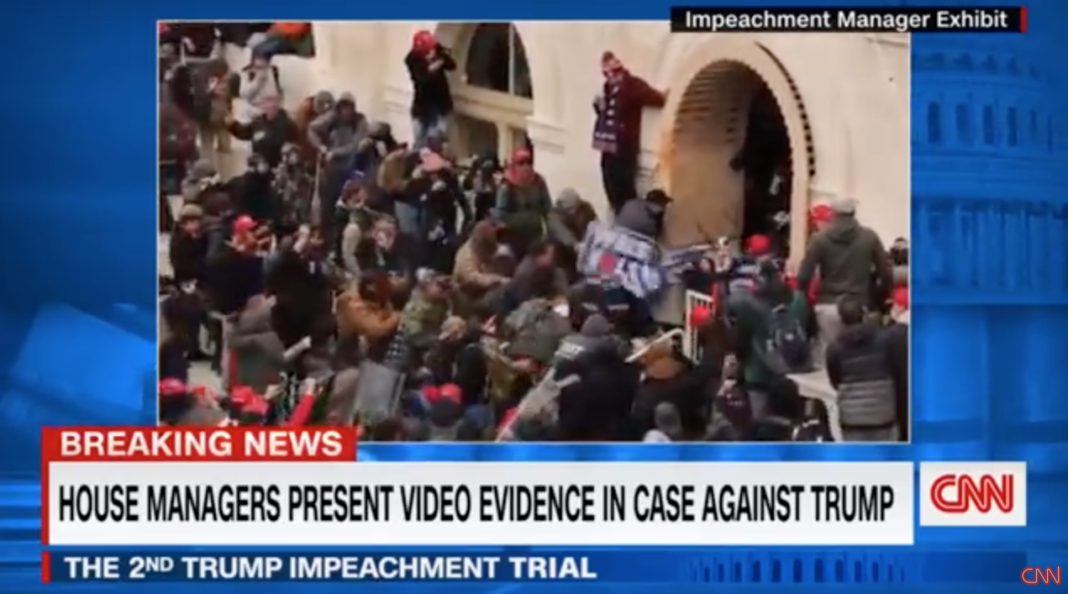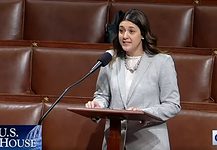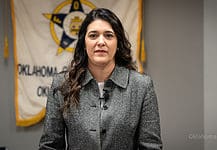Last Updated on February 10, 2021, 6:22 PM | Published: February 10, 2021
When the second impeachment trial of former President Donald Trump began on Tuesday, the differences between the first trial and the 2021 edition could not be more stark.
This is a trial based largely on what Trump and his followers did with their smartphones during the days leading up to the January 6 attack on the Capitol.
It is a trial by tweet, and Trump and his minions created and posted much of the evidence presented this week by the House impeachment managers.
Opinion by George D. Lang
If, by some miracle, Republican senators pay attention to the presented evidence and vote their conscience instead of living in fear of recalcitrant MAGA voters primarying them in 2022, it will be because the former president and the domestic terrorists acting in his thrall gave prosecutors everything they needed.
Just witness the prosecution by U.S. Rep. Stacey Plaskett (D-Virgin Islands), who presented evidence of communication strategies between the terrorists. She showed the jurors a photo of Proud Boys leader Dominic Pezzola wearing an earpiece through which, Plaskett said, Pezzola “direct(ed) movements throughout the building.”
It was a photo taken by a participant in this violent attack. If there was a Criminality for Dummies book, it would tell these idiots to not collect evidence of their crimes for future use.
Similarly, U.S. Rep. Madeleine Dean (D-Pennsylvania), presented the 34 tweets Trump posted in the 24 hours prior to the attack, including a 1 a.m. January 6 tweet saying, ‘If Vice President @Mike_Pence comes through for us, we will win the Presidency.” He put the onus on Pence to deny the electors and deliver a fraudulent victory to Trump.
When Pence told Trump he did not have the constitutional authority to do this, Trump told the crowd gathered at the Ellipse, “All Vice President Pence has to do is send it back to the states to recertify and we become president and you are the happiest people.” Trump put a target on Pence’s back that afternoon, and he did it publicly, with thousands of smartphones and C-SPAN cameras capturing it all.
In his opening statement, U.S. Rep. Jamie Raskin, D-Maryland, presented a horrifying 13-minute video culled from smartphone data and security cameras, which included attackers yelling “Hang Mike Pence” and yelling through megaphones, “Bring out Pence.”
Trump’s message was clearly received by his followers, who then enthusiastically posted about their actions on social media.
An attorney from Georgia named McCall Calhoun posted on Facebook that “the first of us who got upstairs kicked in Nancy Pelosi’s office door and pushed down the hall towards her inner sanctum, the mob howling with rage — Crazy Nancy probably would have been torn into little pieces, but she was nowhere to be seen.”
Calhoun is being held without bond in connection with the attacks. If his law career is not destroyed by the case being made against him, the bad publicity of a lawyer admitting his crime on social media will do the job.
Politicians were notoriously slow on the uptake regarding the digital media revolution of the mid-2000s and its consequences. A mere 16 months after YouTube launched, U.S. Senator George Allen, R-Virginia, used the racist term “macaca” to describe S.R. Sidarth, a campaign worker of Indian descent who was filming the rally for Allen’s opponent, former Navy Secretary James Webb. Allen first denied what he said, but YouTube caught him in a lie.
A decade later, Trump was noted for being the first president to fully embrace Twitter as a key communications strategy. In fact, Trump weaponized Twitter, and while Twitter CEO Jack Dorsey pulled the plug on Trump’s Twitter account after the January 6 attack, he was about four years too late. But because Trump lacked the message discipline to self-censor, most of his thoughts, attitudes and threats are now preserved on the World Wide Web.
From a prosecutorial standpoint, the vast amount of raw evidence collected on social media against Trump and his followers allowed the House managers to create a compelling case for a guilty verdict. But as legal scholars make clear, impeachment is a political remedy, and as such it is being largely dismissed by Republicans.
U.S. Senator Josh Hawley (R-Missouri), one of the instigators of the insurrection, was seen on Wednesday kicking back in the gallery, his feet on the chair in front of him, clearly not listening to the House managers. He should be paying attention, as should U.S. Senator James Lankford, who was speaking on the Senate floor when the U.S. Secret Service interrupted him and escorted him to safety on January 6.
Along with 43 other Republicans, Lankford voted to end the impeachment, falsely characterizing the proceedings on Twitter.
“You cannot vote to remove someone from office who is not even in office,” Lankford tweeted.
Clearly, Lankford is listening to the wrong constitutional scholars and he should consider not taking Alan Dershowitz and Jonathan Turley’s legal theories as gospel. But Lankford should pay attention to not only the House managers’ words, but to the video implicating Trump and his followers.
It is damning, and we have the defendant and his accomplices to thank for all this evidence.
George Lang has worked as an award-winning professional journalist in Oklahoma City for over 25 years and is the professional opinion columnist for Free Press. His work has been published in a number of local publications covering a wide range of subjects including politics, media, entertainment and others. George lives in Oklahoma City with his wife and son.











